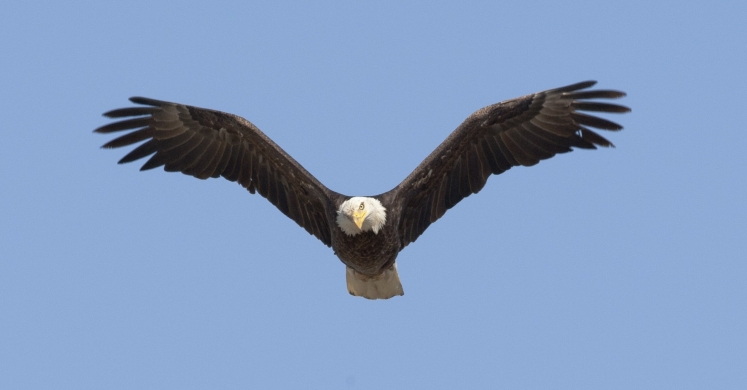Blog

#bioPGH Blog: Pittsburgh’s Eagles
 A resource of Biophilia: Pittsburgh, #bioPGH is a weekly blog and social media series that aims to encourage both children and adults to reconnect with nature and enjoy what each of our distinctive seasons has to offer.
A resource of Biophilia: Pittsburgh, #bioPGH is a weekly blog and social media series that aims to encourage both children and adults to reconnect with nature and enjoy what each of our distinctive seasons has to offer.
The Philadelphia Eagles may have won the Super Bowl, but the Pittsburgh eagles have won peoples’ hearts! Many of us follow our two Allegheny County breeding pairs by tuning in to the live streams run by Audubon Society of Western Pennsylvania (ASWP) and CSE (formerly PixController), where you can watch both the Bald Eagle nests in Harmar and Hays Woods. ASWP owns the camera at Harmar and the property that the Harmar eagles nest on. It also partners with Comcast Business and a few other organizations to support the Harmar and Hays cameras. If you have had a chance to check out the cameras this year, be sure to tune in!
Both nests currently have eggs incubating! The Hays nest currently has three eggs. The first egg was confirmed on February 13, and the third egg was confirmed on February 19. The birds of the Harmar nest tend to lay their eggs roughly two weeks later than the Hays pair, and this year was no different. The first Harmar egg was confirmed on February 24 and the second egg was confirmed just a few days later on February 27. Fingers crossed for our two local broods! Last year, in spite of a wind storm destroying their nest in mid-February, the Hays pair still produced at least one egg in the new nest, with one eaglet fledging the nest on June 15, 2017. The Harmar nest produced two eggs last year, both of which led to successfully fledged chicks (“fledging” refers to leaving the nest—though it’s common for the fledglings to stay near the parents for several weeks afterwards until they have learned to successfully find food for themselves.) Since the eggs typically incubate for ~35 days, we can start looking for chicks in another two weeks!
Our local Bald Eagles are a great example of the interconnectedness of nature. Both pairs built their nests in sycamore trees—one of a few “favorite” trees for Bald Eagles in Pennsylvania, along with tulip poplars, red maples, and red oaks. Two reasons a Bald Eagle might prefer a sycamore is their massive size, perfect for a nest that can range in weight from several hundred pounds to nearly two thousand pounds. Sycamores also tend to grow in close proximity to some sort of body of water, such as a lake or a river. Given that Bald Eagles specialize in fishing, sycamores near rivers are an understandable nesting choice. (Well, Bald Eagles prefer fishing when they aren’t scavenging for a free meal of carrion.)
Local Bald Eagles today have a much better chance at fishing for their breakfast than counterparts only a few decades ago. At that time, the water quality of our rivers was so poor, healthy fish populations weren’t sustainable. In addition, Bald Eagle populations were reduced to only 487 nesting pairs in the Lower 48 states by the first half of the twentieth century due to DDT, a pesticide that made its way into waterways and into the very fish that bald eagles were eating. The US took decisive action to save Bald Eagles across the nation by banning DDT and adding Bald Eagles to the endangered species list, and Pittsburgh ultimately created a better home for these majestic birds when the city began its run for resilience and focused on air and water quality. The Bald Eagle is now stands as a symbol not only of America, but of what we can accomplish when we set our minds to responsible choices and actions.
Thank you to Rachel Handel of the ASWP for her insights on Pittsburgh's eagles!
Connecting to the Outdoors Tip: If you’re interested in seeing the Hays nest in person, right now is good time of year to do before the trees leaf for the summer. The nest is visible from the Great Allegheny Passage trail between Southside Works and the Waterfront. Be sure to obey all of the signage and watch out for cyclists and runners!
Continue the Conversation: Share your nature discoveries with our community by posting to Twitter and Instagram with hashtag #bioPGH, and R.S.V.P. to attend our next Biophilia: Pittsburgh meeting.
Photo Credits: USFWS and Judy Gallagher CC-BY-2.0

